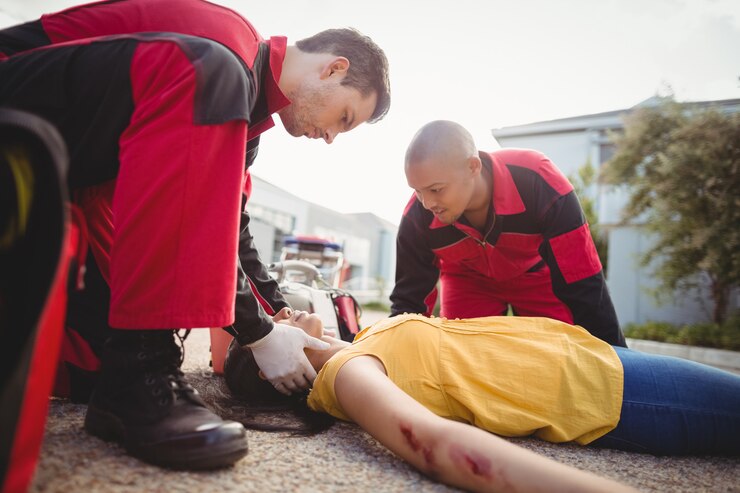Cardiopulmonary resuscitation (CPR) is a life-saving technique that has become an essential skill for individuals in various professional and personal contexts. Whether in emergency medical services, workplace safety, education, or community settings, knowing how to perform CPR can mean the difference between life and death. At the core of CPR education and implementation are CPR instructors—dedicated professionals who equip others with the knowledge, confidence, and practical skills needed to respond effectively in cardiac emergencies.
Understanding the role of a CPR instructor involves recognizing the multifaceted responsibilities they carry and the critical impact they make in both individual lives and broader public health. This blog explores the duties, training requirements, teaching strategies, and broader significance of CPR instructors in today’s society.
Educators in Life-Saving Skills
The most fundamental role of a CPR instructor is to educate others in performing cardiopulmonary resuscitation. This includes teaching the correct procedures for chest compressions, rescue breathing, and the use of automated external defibrillators (AEDs). CPR instructors often follow standardized curriculum guidelines from organizations like the American Heart Association (AHA), American Red Cross, or other accredited institutions.
Through hands-on training, video demonstrations, and theoretical instruction, CPR instructors ensure that learners understand both the “how” and the “why” behind each step in the CPR process. They must tailor their teaching methods to suit different learning styles and levels of experience, from healthcare professionals to laypersons with no medical background.
Promoters of Public Safety and Awareness
Beyond technical instruction, CPR instructors serve as vital advocates for public health and emergency preparedness. By educating people on how to act swiftly and correctly in emergencies, instructors play a key role in reducing mortality rates due to cardiac arrest and related incidents. According to the AHA, nearly 350,000 out-of-hospital cardiac arrests occur annually in the United States. Immediate CPR can double or even triple a victim’s chance of survival.
CPR instructors often participate in community outreach programs, workplace safety initiatives, and school health curriculums to broaden access to CPR training. They help raise awareness of the importance of knowing CPR and ensure that more individuals are capable of delivering immediate assistance until professional help arrives.
Training and Certification Requirements
To become a CPR instructor, individuals must undergo specialized training that goes beyond basic CPR knowledge. Most certifying bodies require candidates to complete a CPR Instructor Course, which includes both online and in-person components. The training typically covers instructional techniques, student assessment methods, and best practices for delivering effective feedback.
Candidates must already hold a valid CPR certification before entering an instructor program. Upon successful completion, they receive certification that qualifies them to teach CPR classes and administer certification tests. Instructors are also required to renew their credentials periodically and stay up to date with the latest resuscitation science and guidelines.
Assessors and Evaluators
A significant part of a CPR instructor’s job is to evaluate learners’ performance. Instructors must determine whether students have grasped the necessary concepts and can perform the skills correctly and confidently. This includes observing hands-on practice, administering written tests, and offering constructive feedback.
Assessment is not merely about passing or failing students; it’s about ensuring competency. Instructors often have to work with learners who are anxious or struggling with coordination and help them overcome these challenges through encouragement, additional practice, or alternative teaching methods.
Facilitators of Confidence and Readiness
Performing CPR in a real-life emergency requires not only technical skill but also the confidence to act quickly and decisively. CPR instructors are instrumental in building this confidence. They create a supportive learning environment where mistakes are seen as learning opportunities and questions are encouraged.
Through realistic simulations and scenario-based training, instructors prepare students for the psychological aspects of emergency response. These exercises help trainees experience the urgency and intensity of real-life situations, thereby enhancing their readiness to act when the time comes.
Advocates for Workplace Safety and Compliance
In many professional settings, CPR certification is a legal or regulatory requirement. CPR instructors help organizations meet these requirements by delivering on-site training and ensuring that employees are compliant with occupational health and safety standards. Industries such as healthcare, childcare, construction, and hospitality often rely on certified CPR instructors to maintain a safe working environment.
Instructors also assist organizations in implementing emergency response plans, training safety teams, and conducting drills. Their expertise contributes to a culture of preparedness, which can reduce liability and improve outcomes in crisis situations.
Adaptability to Various Audiences
A CPR instructor must be adaptable and able to connect with diverse audiences. Training a group of high school students requires a different approach than instructing experienced nurses or emergency responders. CPR instructors must be skilled in adjusting their communication style, language, and content depth based on the audience’s background and needs.
Additionally, instructors must be culturally sensitive and aware of how personal beliefs and experiences can affect learning. They strive to create inclusive environments where every participant feels respected and valued.
Navigators of Technological Advancements
Technology continues to evolve the landscape of CPR training. From high-fidelity manikins that provide real-time feedback to virtual reality simulations, CPR instructors must stay abreast of new tools and incorporate them into their teaching. These innovations not only enhance the learning experience but also allow for faster test results and improved skill retention.
Instructors are responsible for mastering these tools and understanding how to integrate them effectively into their curriculum. They also help organizations select appropriate training technologies and ensure that equipment is used and maintained correctly.
Mentors and Role Models
CPR instructors often serve as mentors and role models, particularly in communities where access to medical education is limited. By sharing their knowledge and demonstrating professional behavior, instructors inspire others to pursue careers in healthcare, emergency response, or public service.
Their dedication to saving lives through education leaves a lasting impression on students and contributes to a more informed, prepared, and compassionate society. In many ways, the impact of a CPR instructor extends far beyond the classroom.
Lifelong Learners and Contributors to Best Practices
Effective CPR instructors understand the importance of continuing education. They attend workshops, participate in peer reviews, and engage in research to stay updated on the latest advancements in resuscitation science. This commitment to lifelong learning ensures that their teaching remains current and evidence-based.
Many instructors also contribute to the development of training materials, curriculum updates, and instructional methodologies. By sharing their insights and experiences, they help shape best practices in CPR education and improve overall program quality.
Conclusion
The role of a CPR instructor is both vital and dynamic. These professionals do much more than teach a set of procedures—they empower individuals to act decisively in life-or-death situations, promote community resilience, and contribute to a culture of health and safety. Through their efforts, thousands of people each year gain the skills and confidence needed to save lives.
As we continue to face public health challenges and emergencies, the importance of well-trained CPR instructors becomes even more evident. Their work not only leads to faster test results and better preparedness but also inspires a sense of shared responsibility for the well-being of others. In a world where every second counts, CPR instructors truly are unsung heroes on the front lines of education and emergency response.

















